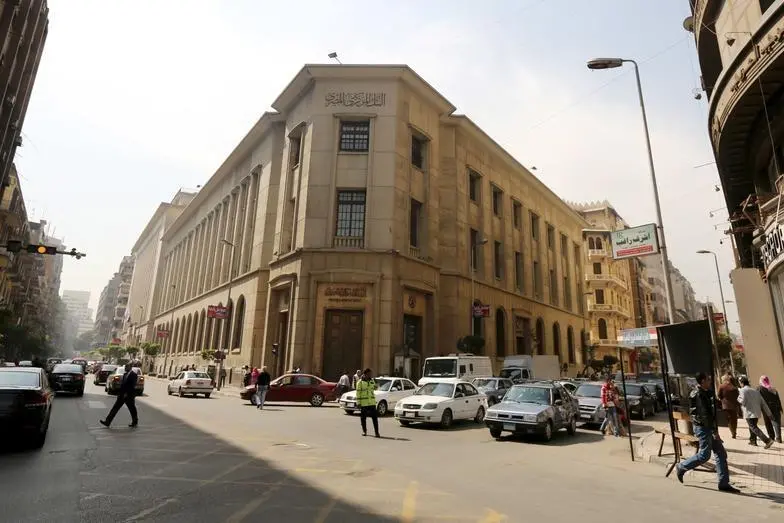On May 22, 2025, Egypt’s Monetary Policy Committee (MPC) surprised markets by trimming its key overnight deposit rate by 100 basis points to 24 percent, and its lending rate by the same margin to 25 percent. This move, the second rate cut in 2025 following a pause of nearly a year, fell short of the 175-bps reduction analysts had forecasted, yet signaled the central bank’s growing confidence that inflation is on a sustainable downward path while growth gathers pace (Reuters).
Why the Cut Was Smaller than Expected
A Reuters poll of 16 economists conducted in mid-May showed a consensus for a 175-bps cut, with expectations the deposit rate would fall to 23.25 percent and the lending rate to 24.25 percent. Instead, the MPC opted for a more cautious 100-bps reduction, reflecting a desire to balance support for growth against risks of prematurely loosening monetary conditions.
Economic Growth Accelerates
Economic momentum played a key role in the MPC’s calculus. According to official estimates, real GDP growth accelerated to 5.0 percent in Q1 2025, up from 4.3 percent in Q4 2024. This pickup was driven by:
- Robust domestic activity, including strong private consumption and a rebound in tourism arrivals following regional stability.
- Increased industrial output, as factories ramped up production to meet both domestic and export orders.
- Agricultural resilience, with favorable harvests boosting rural incomes and rural-urban remittances.
The central bank expects growth to remain above 5 percent for the 2025–26 fiscal year, which begins July 1, supported by IMF-backed reforms and renewed foreign investment in sectors like real estate and infrastructure.
Inflation: Easing but Not Yet Tamed
Headline consumer-price inflation, after peaking at 38.0 percent in September 2023, has steadily eased due to base-year effects and tighter monetary policy:
- February 2025: Inflation dipped to 12.8 percent, halving from a year earlier.
- April 2025: A slight uptick to 13.9 percent reflected seasonal foodpressure and the lagged effects of earlier currency moves.
The MPC projects that inflation will continue its downward trajectory throughout 2025 and into 2026, though at a “constrained pace” given remaining fiscal consolidation and the stickiness of non-food price pressures.
Money Supply and Liquidity Trends
Controlling broad money (M2) growth has been a critical pillar of Egypt’s macro-stabilization effort. Data show:
- February 2025: M2 growth stood at 33.9 percent year-on-year.
- March 2025: Growth moderated to 25.8 percent, reflecting a combination of higher reserve requirements and central bank sterilization operations.
Slower money-supply expansion helps rein in excess liquidity, ensuring that rate cuts do not reignite inflationary pressures. It also underpins Egypt’s commitment to the Extended Fund Facility (EFF) program with the International Monetary Fund (IMF).
Exchange Rate Flexibility and Currency Developments
As part of its IMF-supported reform package, the Central Bank of Egypt (CBE) has maintained a flexible exchange-rate regime since a sharp devaluation in March 2024. Key developments include:
- March 2024: The pound weakened from 24 to 30 per U.S. dollar, aligning parallel and official market rates.
- May 2025: The pound averaged 50.3 against the dollar, reflecting import-demand pressures and capital inflows volatility.
- Outlook: Analysts forecast a gradual further depreciation to around 54.8 per dollar by mid-2026, supporting export competitiveness but posing short-term inflation risks.
The IMF Program: From Shock Therapy to Gradual Easing
Egypt’s 46-month Extended Fund Facility, initially approved in December 2022 for US$3 billion, was expanded by US$5 billion in March 2024. Under this arrangement:
- March 2024: Egypt hiked rates by 600 bps and devalued its currency to secure initial disbursements.
- March 29, 2024: The IMF completed the first and second reviews, approving an augmentation that unlocked US$820 million immediately (IMF).
- January 20, 2025: A Reuters poll forecasted that IMF reforms would underpin 4.0 percent GDP growth in FY 2024–25, rising to 4.7 percent in 2025–26 and 5.0 percent in 2026–27.
- March 10, 2025: The IMF completed its fourth review, greenlighting US$1.2 billion in new disbursements and approving a Resilience and Sustainability Facility (RSF) arrangement for US$1.3 billion.
These successive reviews underscore Egypt’s adherence to fiscal targets—such as expanding tax revenues by 2 percent of GDP over two years—and its commitment to structural reforms aimed at diversifying the economy.
Fiscal Consolidation and Public Finance
Beyond monetary policy, fiscal discipline remains pivotal. Under the IMF program, Egypt has pledged to:
- Reduce the budget deficit from 6.7 percent of GDP in FY 2023–24 to below 5 percent by FY 2026–27.
- Reform energy subsidies, cutting blanket subsidies on fuel and electricity and replacing them with targeted cash transfers.
- Broaden the tax base by reducing exemptions and enforcing value-added tax (VAT) compliance.
While these measures weigh on domestic demand in the near term, they enhance long-run debt sustainability and create fiscal space for public investment in infrastructure, health, and education.
Impact on Borrowers and Savers
The 100-bps cut reshapes financial conditions for households and businesses:
- Corporate borrowers: Medium- and large-cap firms with access to bank credit will see borrowing costs fall back toward 18–20 percent in effective terms, encouraging investment in manufacturing and services.
- SMEs: Smaller enterprises may face limited pass-through, as banks balance margin maintenance against risk appetite; however, targeted credit lines under public-private partnership schemes could deliver cheaper financing.
- Deposit-taking savers: Deposit rates now stand at 24 percent, offering real returns when adjusted for inflation exceeding 12 percent. Nevertheless, many retail depositors supplement bank yields with real-estate investments and gold holdings, hedging against currency risks.
Banks’ net interest margins may compress slightly in Q2 2025, but stronger loan growth and improved asset quality should help preserve profitability.
Regional Comparison: North Africa & Middle East
Egypt’s move comes amid a regional trend of easing monetary policy as inflation recedes:
- Morocco: The central bank cut its policy rate by 50 bps to 3.0 percent in April 2025, citing lower core inflation and stabilizing food prices.
- Turkey: In contrast, Turkey left rates at 45 percent in May 2025, battling double-digit inflation near 55 percent.
- South Africa: The South African Reserve Bank paused at 8.25 percent in May 2025, noting upside risks from global commodities and the rand’s volatility.
Egypt now ranks among the highest-yielding markets in the region, attracting “carry traders” but also facing volatility if global funding conditions tighten.
Risks and the Road Ahead
While the rate cut supports growth, several risks remain:
- Global Commodity Prices: Egypt’s heavy reliance on wheat imports makes it vulnerable to supply shocks and price spikes, which could reverse disinflation gains.
- Fiscal Slippage: Delays in subsidy reforms or tax-collection measures could derail fiscal targets, undermining IMF conditionality and monetization pressures.
- Political Uncertainty: Domestic and regional geopolitical developments may affect tourism, remittances, and investor sentiment.
- Capital Flows: Changes in U.S. Fed policy could trigger outflows from emerging markets, pressuring the pound and foreign reserves.
The CBE has signaled readiness to adjust the policy mix—through open-market operations and reserve requirements—should inflation deviate from the projected path or capital-flow volatility intensify.
Forward Guidance from the MPC
The MPC’s statement reiterated that further rate cuts remain “on the table,” contingent on continued disinflation and stable financial conditions. Industry analysts anticipate:
- A total of 150–200 bps in additional cuts by end-2025, taking the deposit rate toward 22 percent.
- Continued moderation in M2 growth to 20–22 percent by Q4 2025.
- A shift toward forward-looking guidance, with the CBE emphasizing quantitative inflation targets and a de facto benchmark corridor for money-market rates.
Investors will watch the June MPC meeting for clues on the timing of the next reduction, as well as any tweaks to reserve-requirement ratios that influence bank liquidity.
Conclusion
Egypt’s 100-bps rate cut on May 22, 2025, reflects the central bank’s nuanced approach: supporting a growing economy while safeguarding against inflationary resurgence. Anchored by an IMF-backed reform package and bolstered by robust growth and moderating prices, the MPC has room to continue easing—but must remain vigilant against fiscal slippages and external shocks. For businesses, households, and foreign investors, the coming quarters will test whether Egypt can sustain its disinflation path without sacrificing growth momentum, setting a template for middle-income economies grappling with post-pandemic recovery and global monetary shifts.
Ready to take your career to the next level? Join our dynamic courses: ACCA, HESI A2, ATI TEAS 7 , HESI EXIT , NCLEX – RN and NCLEX – PN, Financial Literacy!🌟 Dive into a world of opportunities and empower yourself for success. Explore more at Serrari Ed and start your exciting journey today! ✨
photo source: Google
By: Montel Kamau
Serrari Financial Analyst
23rd May, 2025
Article, Financial and News Disclaimer
The Value of a Financial Advisor
While this article offers valuable insights, it is essential to recognize that personal finance can be highly complex and unique to each individual. A financial advisor provides professional expertise and personalized guidance to help you make well-informed decisions tailored to your specific circumstances and goals.
Beyond offering knowledge, a financial advisor serves as a trusted partner to help you stay disciplined, avoid common pitfalls, and remain focused on your long-term objectives. Their perspective and experience can complement your own efforts, enhancing your financial well-being and ensuring a more confident approach to managing your finances.
Disclaimer: This article is for informational purposes only and does not constitute financial advice. Readers are encouraged to consult a licensed financial advisor to obtain guidance specific to their financial situation.
Article and News Disclaimer
The information provided on www.serrarigroup.com is for general informational purposes only. While we strive to keep the information up to date and accurate, we make no representations or warranties of any kind, express or implied, about the completeness, accuracy, reliability, suitability, or availability with respect to the website or the information, products, services, or related graphics contained on the website for any purpose. Any reliance you place on such information is therefore strictly at your own risk.
www.serrarigroup.com is not responsible for any errors or omissions, or for the results obtained from the use of this information. All information on the website is provided on an as-is basis, with no guarantee of completeness, accuracy, timeliness, or of the results obtained from the use of this information, and without warranty of any kind, express or implied, including but not limited to warranties of performance, merchantability, and fitness for a particular purpose.
In no event will www.serrarigroup.com be liable to you or anyone else for any decision made or action taken in reliance on the information provided on the website or for any consequential, special, or similar damages, even if advised of the possibility of such damages.
The articles, news, and information presented on www.serrarigroup.com reflect the opinions of the respective authors and contributors and do not necessarily represent the views of the website or its management. Any views or opinions expressed are solely those of the individual authors and do not represent the website's views or opinions as a whole.
The content on www.serrarigroup.com may include links to external websites, which are provided for convenience and informational purposes only. We have no control over the nature, content, and availability of those sites. The inclusion of any links does not necessarily imply a recommendation or endorsement of the views expressed within them.
Every effort is made to keep the website up and running smoothly. However, www.serrarigroup.com takes no responsibility for, and will not be liable for, the website being temporarily unavailable due to technical issues beyond our control.
Please note that laws, regulations, and information can change rapidly, and we advise you to conduct further research and seek professional advice when necessary.
By using www.serrarigroup.com, you agree to this disclaimer and its terms. If you do not agree with this disclaimer, please do not use the website.
www.serrarigroup.com, reserves the right to update, modify, or remove any part of this disclaimer without prior notice. It is your responsibility to review this disclaimer periodically for changes.
Serrari Group 2025












